A Tangle of Problems Links Prison, Foster Care
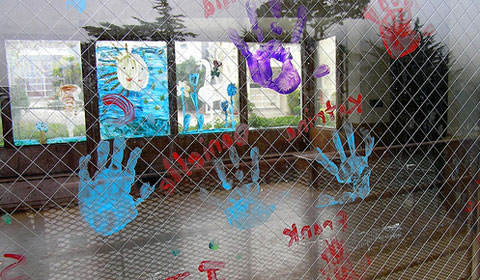
Wanda Chambers came to understand motherhood in an unlikely setting: the solitude of a maximum-security prison.
Chambers, now 41, had struggled with addiction for years; she had tried treatment but couldn't stop using. Her crisis bottomed out in 1998, when child welfare authorities took her infant daughter, Princess, and placed her in the home of a foster parent. Soon afterward, Chambers was incarcerated on a drug conviction.
At Bedford Hills Correctional Facility in Westchester, "I was locked up long enough to really strengthen my mind and change my way of thinking," she recalled. When she got out about three years later, she was determined to prove to the government she deserved to have her daughter back. She went through 18 months of court-supervised drug treatment and parenting skills programs before finally regaining custody.
The experience continues to shape her family. She works as an advocate for parents dealing with child welfare. Meanwhile, Princess' former foster mother remains involved, helping care for the child as a co-parent.
For Chambers, prison and foster care brought regret and revelation. "It was definitely a learning experience," she said. "You lose everything, and you break family ties. And I always wanted to get it right, but I just didn't know how."
In New York City's social service structure, two major institutions wield the power to separate families in the name of safety. With the aim of protecting society as a whole, criminal justice agencies sweep up parents through courts and prisons, while the Administration for Children's Services, charged with safeguarding individual children from harm, routinely removes young people from troubled homes. Though driven by different goals, the two systems interact in many families. Critics warn that both types of intervention may further deepen patterns of emotional and social trauma for children and parents.
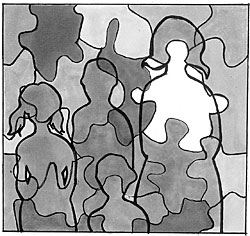
Interlocking Systems, Interlocking Problems
There are no comprehensive statistics on families involved with both the child welfare and criminal justice systems in New York City. According to New York State's Department of Correctional Services, the majority of inmates report having at least one child. The Correctional Association, a New York-based advocacy group, estimates that statewide, more than 10,000 children had a mother imprisoned in New York prisons or jails. National data indicate that most mothers in state prisons lived with their children before their current sentence. Of mothers in state prisons with children under 18, about one in ten reported having a child in foster or institutional care; many more had children living with other relatives, though some relatives may also serve as "kinship" foster caregivers.
But national child welfare data reveal more subtle overlaps between the systems. One third of all children reported to local child welfare agencies for being maltreated at home had a primary caregiver who had been arrested at least once. Long-term studies show that families often cycle through social problems that can lead both to losing a child to foster care and to losing a parent to prison: issues such as poverty, substance abuse and mental illness. Demographics underline the connections: people in poor and black communities tend to have heavier involvement with both child-protective services and the criminal justice system.
Reflecting the synergy of environment and family dynamics, most child maltreatment reports are tied not to outright abuse, but "neglect" -- failure to provide sufficient care. A child could become technically neglected if her parent cannot afford adequate food and housing, or is consumed by addiction.
Although a parent's encounter with law enforcement also will not necessarily cause her to lose custody, Children's Services may intervene on an emergency basis if an arrest leaves the child unattended. Reform advocates say these placements can lead to prolonged separation as families wade through the child welfare bureaucracy.
"Over a child's lifetime, mothers and fathers may be arrested multiple times, intermittently use drugs, or have other problems that affect the child's home," said Susan Phillips, a professor of social work at the University of Illinois-Chicago. "People not only progress through the criminal justice system; they loop through it."
The same crises make the home more vulnerable to child welfare intervention. Whether one system is a cause or an effect of the other may be impossible to discern, but both can pull children into a spiral of instability.
The Loss of a Child
Cathy Faust barely had a chance to be a mother before Childen's Services decided she was an unfit parent. A survivor of child abuse, she struggled with depression and drugs throughout her youth, right up to the birth of her daughter Jimeaka in 1990. After charging her with neglect, she recalled, Children's Services pressured her to turn her baby over to the care of her sister-in-law.
Without access to legal help or support services, Faust said, she went along with the plan, but three years later, her sister-in-law moved to adopt Jimeaka and terminate Faust's parental rights.
Though Faust maintained some contact with her daughter over the next few years, losing custody stoked her emotional volatility. "I just felt worthless and hopeless," she said. "It was like I was [the] worst person in the world. So it just made me indulge in drugs more, because I'm feeling less than a woman because I can't even be a mother to my child."
Faust was arrested on drug-related charges in 1998. When she met her daughter again after her release from prison six years later, the legal separation had grown into a permanent distance, and they remain estranged.
Faust, now 47, holds down a job at a social service organization and receives regular therapy. But while her life has become more stable, she said, it is not whole.
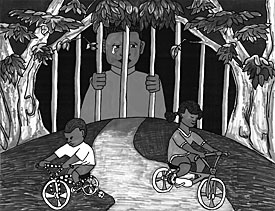
"That's my only child," she said. "And it's like, OK, my life is together, but it's not together, because that's a piece that's missing. And so much damage that has been done-not just for me, but for her also, for the family."
Recent reform efforts in both child welfare and criminal justice have emphasized preventing mistreatment or neglect and preserving family bonds. Some alternative sentencing programs can route parents into drug treatment rather than prison. Children's Services has stepped up social support services to help children in distressed homes remain with their parents. But advocates say both systems still fail the city's most vulnerable families.
To regain custody of a child in foster care, a birth parent must demonstrate her willingness and ability to care for the child by meeting an array of legal obligations, such as a mandated "service plan" that could include parenting classes or drug treatment, along with periodic review by family court. But Sarah From, director of public policy with the Women's Prison Association, said complying with this can be nearly impossible for a parent behind bars. "The onus is very much on the woman to manage this process of keeping her family together, while she's under the very hard and stressful situation of incarceration," From said.
Children's Services, which must facilitate visits with birth parents, has helped ease the strain of separation with its Children of Incarcerated Parents Program, which provides foster care children with transportation to correctional facilities across the state. In recent years, some prisons have become more accommodating as well. Parenting centers at Rikers and Bedford Hills, for example, allow family visits in a more open, "child-friendly" setting.
Yet, according to the Correctional Association, problems persist at other facilities, including cumbersome security clearance procedures, a lack of social support services for parent-child interaction, and difficulties coordinating visits with child welfare and corrections personnel.
As an advocate, Chambers said she sees many incarcerated parents set back by unresponsive case managers, who are overworked, out of reach or just insensitive to the challenges of incarceration. "I feel like, when a parent is locked up, out of sight, out of mind," she said.
Legal Blockades
Unlike a criminal trial, the family court process centers on assessing a child's well-being, rather than judging evidence of alleged criminal activity. The judge and the city tend to take a preventive approach, focused on broad risks to family safety -- from a lack of medical care to domestic violence.
Shortages of money and staff complicate the legal landscape. Despite recent efforts to make the process more efficient, parent advocates say the system still lacks the personnel and funding it needs to conduct adequate investigations or provide competent counsel.
The hurdles facing imprisoned parents grew higher in the late 1990s with the federal Adoption and Safe Families Act. If a child has spent 15 of the previous 22 months in foster care, the law requires that child welfare authorities file for termination of the birth parent's rights. The aim is to set a time period so the child can find "permanency" instead of foster care -- generally, either reunification with the birth parent or adoption by another family.
Though child welfare agencies can make limited exceptions to the timetable based on family circumstances, the law has tightened pressure on parents to defend their custodial rights. Meanwhile, state policies make no specific exemptions for incarcerated parents, whose sentences typically exceed the time line. According to research led by Columbia University law professor Philip Genty, in the years following the act's passage -- 1997 to 2002 -- termination proceedings for incarcerated parents more than doubled.
Criminal justice reform groups have pushed for state legislation to make the foster care timeframe more flexible for incarcerated parents.
The law's aim of promoting stability has backfired, Genty said. "There's no unified, enlightened policy going on," he said. "The correctional system is making its decisions for its own reasons, the foster care system is making its decisions for its own reasons, and nobody's really keeping track of whether that creates inherent tensions."
Prison as the Final Chance
After returning to their communities, many formerly incarcerated women say prison was the necessary "break" that compelled them to change their lives. But to activists, that attests not so much to the positive aspects of incarceration as to a lack of alternatives. Reform advocates argue that neither locking up parents nor removing children from their homes can substitute for community-based programs that intervene to keep families intact before a crisis hits.
"It's not that the transforming factor or moment had to be prison, per se," said Tanya Krupat, a program director at the Osborne Association, a criminal justice-focused service and advocacy organization. "But it was that prison may have been the first time that a woman felt safe, let's say, because she was in a domestic violence relationship, or it's the first time someone could actually detox and think clearly. Then that's a failure of us not having adequate or accessible drug treatment, domestic violence services and other programs."
After Natalie Credell was arrested in 2005 with her boyfriend on drug-related charges, she was placed on bail and ordered into a residential rehabilitation program, designed to house her and her infant son, Nasir, while she got treatment. But Credell, 31, found the program stressful and stifling. After clashing with the counselors, she dropped out and relapsed. She ended up doing 15 months in a federal prison in Virginia, and Administration for Children's Services placed Nasir in the care of Natalie's father.
Like Chambers, Credell hit a wall in prison. "It just dawned on me that I'm a mom now," she said. "This is not where I want to be. This is not the type of mother that I want to be to my son."
Following her release, Credell found her way to Hour Children, a Queens-based organization for women transitioning from prison that offers job training, childcare, and supportive housing. She regained custody of Nasir in March 2007, and the two now live together at Hour Children while she studies to become a drug-treatment counselor.
Credell traces her crisis farther back than her arrest or even her addiction. She first encountered Children's' Services as a child, she recalled, when her mother's drug use prompted a child welfare investigation. She eventually went to live with her grandmother. But her mother's turbulence had started her on a chaotic trajectory.
"The streets taught her," she said, "and this is what she passed on to me."
Now on the outside, Credell hopes to pass something better onto her son. "A mother is a child's world," she said. "So in order to make things happen for him, I have to make things happen for me."
Michelle Chen is a freelance writer and a native New Yorker. This article is part of a series that will explore the connections between the criminal justice and child welfare systems in New York City. The project is supported by a fellowship from the Center on Media, Crime and Justice at John Jay College of Criminal Justice.City Hall and CCRB Negotiate Over Hiring Freeze
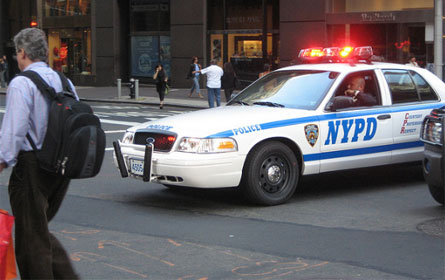
The Civilian Complaint Review Board is negotiating with City Hall for an exception to the citywide hiring freeze. The Board wants to rehire an attorney for a program called the Administrative Prosecuting Unit (APU), which independently prosecutes police misconduct trials.
In the past, New York City Police Department attorneys handled all substantiated cases of police misconduct. With APU, the CCRB’s own lawyer is authorized to take on a portion of cases as a lead prosecutor.
In November 2011, the city extended funding for the program through fiscal year 2012, including funds for one attorney and one investigator. However, with the hiring freeze in effect, the Board is unable to hire an attorney who would be the centerpiece of the program. This may change as Daniel Chu, CCRB’s chairman, expressed optimism about his talks with City Hall.
“CCRB is beginning the search for highly qualified candidates for the APU attorney vacancy,” said Chu. “Recognizing the importance of this hire to the continued success of the APU, City Hall has agreed to review our final selection with a view to permitting the hire as a critical hire.”
Mayor Michael Bloomberg’s press office did not comment on the negotiation, except to say “While a hiring freeze affects all City agencies, each case is reviewed individually. Once a candidate is identified, we will review right away.” CCRB has posted a job vacancy on its website.
Talks about a program like APU date back to 2001 when Mayor Rudolph Giuliani and former Police Commissioner Bernard Kerik proposed giving CCRB the authority to prosecute cases. The state courts ruled that all cases that involve disciplinary actions against officers must be filed with the deputy commissioner for trials, instead of a new office proposed by Giuliani. However, CCRB and the police department began working more closely together.
In 2008, the CCRB and NYPD launched a pilot program where CCRB lawyers would participate in a “second seat” capacity during some police prosecutions. In 2010, Commissioner Kelly and the CCRB took this farther, to grant the Board lead prosecution authority on a random selection of cases.
In the years leading up to 2010, the city saw a rising number of complaints against the NYPD, especially over controversial stop-and-frisk practices where police were encouraged to stop and search large numbers of people for weapons. Many complaints dealt with alleged racial profiling by the police.
Christopher Dunn, an associate legal director at the New York Civil Liberties Union said that the NYPD moved to accept the program “because of public embarrassment due to PD handling of cases” in 2009 and 2010, when NYPD allegedly threw out many substantiated complaints of police misconduct.
Only substantiated cases ever make it to trial and it may take the CCRB many months to determine whether a complaint has merit. About 5-6 percent of all complaints to the CCRB are substantiated.
Attorney Laura Edidin prosecuted and won her first solo case for the Board in May 2011 against two Bronx police officers. She served as solo lead prosecutor on seven total cases for the Board and has since moved on to work as deputy executive director for legal affairs at CCRB at the pilot’s conclusion in November.
The CCRB petitioned and won approval from the city to continue the program, citing its effectiveness in maintaining strong police accountability due to the Board being independent from the Police Department. According to a CCRB testimony, the practice also improves communications between the Board and the police and lessens the chance that the NYPD will drop substantiated cases for trial.
Additionally, attorneys who investigate misconduct are in a unique position to give crucial and correct details to a judge and prepare complainants for trial outside 1 Police Plaza.
However, despite City Hall’s authorization of funds for the program, the city’s hiring freeze prevented CCRB from hiring an attorney to replace Edidin and continue APU’s work. The allocated funds currently sit unused.
“This makes the program meaningless because there’s no one there to prosecute the case,” said Dunn.
The CCRB can hire someone from within city government but its director of communications, Linda Sachs, said that the Board would prefer to seek attorneys from the broadest possible pool of qualified candidates. Potential hires will be reviewed by City Hall, which may make a rare exception to the hiring freeze.
The Guns on Our Streets
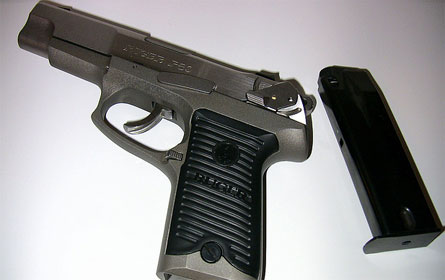
In 2002, the Bureau of Alcohol, Tobacco, Firearms and Explosives released a list of the 10 guns most commonly recovered from crime scenes across the country. At the top of the list: the Smith & Wesson .38-caliber revolver and the Ruger .9mm semiautomatic pistol.
Almost ten years later, NYPD Officer Peter Figoski was shot and killed while responding to an early morning Brooklyn home invasion. When Figoski's fellow officers arrived on the scene, they found two guns: a Smith and Wesson .38 and a Ruger 9mm.
The December shooting, the first in which an NYPD officer was killed in the line of duty in more than four years, once again puts the spotlight on two types of handguns that appear to not only be commonly accessible despite strict gun laws, but also the weapons of choice for many of the city's bad guys.
In a statement to the press shortly after the shooting, Mayor Bloomberg praised Officer Figoski and the entire NYPD for their efforts in helping to drastically reduce crime throughout the city in recent years. He also chided federal officials for failing to crackdown on the illegal gun trade.
"[A]s we look at what’s gotten better in New York City over the decades, there’s one thing unfortunately that hasn’t changed – hasn’t changed at all in Washington – our nation’s threat from the weapons that end up as illegal guns on the streets of our communities," the Mayor said.
Lamont Pride, a 27-year-old already wanted in connection with a shooting in North Carolina, fatally shot Officer Figoski with the Ruger .9mm as Pride attempted to flee a basement apartment in Brooklyn's Cypress Hills neighborhood. He stashed the gun under a car as he tried outrun Figoski's partner, Glenn Estrada. The .38, allegedly belonging to co-conspirator Kevin Santos, was later found in a microwave inside the apartment.
A Pattern
The Figoski murder isn't the first high profile shooting involving gunmen with these types of firearms. In 1993, Colin Ferguson opened fire with a Ruger 9mm on a crowded LIRR train, killing six passengers and wounding another 19. More recently, a gunman shot two men with a Ruger .9mm, killing one, while aboard a Q111 bus in Queens. A Smith and Wesson .38, meanwhile, was Bernhard Goetz's weapon of choice when the electronics technician turned vigilante infamously pumped rounds into four young men aboard a subway car in 1984.
Nor are these the only guns being used in shootings throughout the city. Yet, while much of the focus of the NYPD's gun buyback program (the department has recovered more than 7,000 guns since 2008, but declined to give a breakdown of the kinds of guns turned in) has been on exotic and high-powered firearms - a June event netted a Tec-9 loaded with hollow point bullets; previous buybacks have yielded AK-47 assault rifles and Uzi submachine guns - the weapons arguably doing the most damage on the street are smaller handguns like the .38 and 9mm.
In 2010, more than 75 percent of the 8,853 firearms traced after use in an NYC crime were either pistols or revolvers. Recent law enforcement statistics don't break down gun use, tracing and recovery by make and model. Four of the top five guns on the 2002 ATF list, however, were small handguns.
Many of the guns most commonly used in street crimes are what Eugene O'Donnell, a professor of law and police studies at John Jay College who previously served as both an NYPD officer and criminal prosecutor, and other cops call "Saturday night specials": small, cheap handguns that are generally easy for buyers to get their hands on. "Less sophisticated, cheap guns that are easy to use have been the coin of the realm," O'Donnell says.
But not too cheap, according to Charles Key, a gun expert who spent nearly 26 years with the Baltimore Police Department. "There is a myth about Saturday night specials. The old Saturday night special was some sort of cheap knock off, made of less than sturdy steel that you could buy on the street corner from some rat faced guy selling $2 pistols," says Key, who served as an expert witness in the civil case filed against New York City by the family of Amadou Diallo, the 23-year-old Guinean immigrant who was shot and killed by four NYPD officers in The Bronx in 1999.
"In actual point of fact, criminals don't want cheap knock offs." According to Key, there is no inherent quality - price or ease of use, for example - in Smith & Wesson and Ruger firearms that would make them more attractive to criminals than other handguns. "It really depends on the model," he says. "The easiest gun to use on the market is a double-action, semiautomatic pistol, which simply means that when you pull the trigger, the weapon fires."
The Ruger P95 model used in the Figoski shooting is a 27 oz. double action auto loading pistol - when fired, it automatically reloads and recocks itself, so that a user can fire again by simply pulling the trigger - designed to shoot .9mm caliber bullets. Ruger discontinued the P95 in 2005. The gun retails for roughly $400. Smith & Wesson currently offers more than 60 models of its .38-caliber revolvers, ranging in price from about $450 to more than $1,000. The company's Model 10 has been called " the most popular centerfire revolver of the 20th Century." Both companies declined to speak with the Gazette for this story.
These and other smaller handguns are not only attractive to criminals, but also law-abiding citizens who keep guns for self-defense. Smith & Wesson touts its Bodyguard line of firearms, which includes .38 revolver and .380 semi-automatic pistol, as accurate and easy to use as well as "lightweight, compact and concealable for personal protection."
While Key says that widespread criminal use of Smith & Wesson and Ruger handguns is likely an anomaly - there are plenty of less expensive, lightweight and relatively accurate guns on the market - their prevalence may be a simple matter of supply. Smith & Wesson made more than half of the .38s produced in the country last year, while Ruger produced the second most .9mm firearms.
Looking to Washington
In his tenure as Mayor, Bloomberg has repeatedly called for beefed up federal gun restrictions as well as further tightening of what are already some of the country's toughest gun control laws here in the city.
"It's virtually impossible to get a permit for a handgun in New York City" says criminal defense attorney Don Murray, who represents clients in criminal gun possession cases.
In addition to prohibiting persons who've been convicted of a felony from obtaining a gun license, city law also allows NYPD to deny an application by a person it deems to be lacking "good moral character" or where other "good cause" exists. Private individuals who successfully navigate the licensing process are most like to get a premises license, allowing the licensee to possess a handgun only at a specific residence or place of business.
Given the tough licensing rules, It's safe to say that the overwhelming majority of guns on the street are illegal; that is, the people carrying them don't have a license. Possession of a firearm without a license is a felony, punishable by anywhere from one to 15 years in prison.
"It's very, very strict in New York," Murray says. "Mayor Bloomberg has put a lot of pressure on the DA offices to come down hard on gun possession."
Out of State
The illegal weapons floating around the city are often purchased in southern states like Georgia, North Carolina and Virginia along the so-called "Iron Pipeline." The Ruger .9mm used to shoot Officer Figoski was purchased at a Colonial Heights, Va. sporting goods store, by a man who claims that he lost the gun when he was evicted from his home in 2009, but never reported it lost or stolen.
Virginia is the largest out of state source of guns traced in New York crimes, according to a 2009 ATF report. For one Virginia police officer who has investigated illegal gun sales, it's the Old Dominion's gun expos - large gun shows at which private individuals who are not considered dealers can sell guns without conducting a background check and recording basic buyer information - that attract gun hungry criminals.
"We have some of the biggest gun expos in the country where buyers either don't have to fill out paperwork or get someone else to buy a gun and fill out the paperwork for them," the officer, who spoke on the condition of anonymity, says. "The expos are notorious. You'll see a lot of backdoor dealing there."
Guns are also making their way into the city via the internet. Just days after the Figoski shooting, Mayor Bloomberg announced the results of an NYPD investigation finding that 62 percent of online gun sellers contacted through websites like Craigslist and ArmsList agreed to sell guns to buyers who admitted they couldn't pass a background check, a felony offense.
For many firearm enthusiasts, the city's strict gun laws are not only ineffective, their also misguided. According to Charles Key, guns don't kill people. Criminals do. " You very seldom find police officers killed by priests, pastors or accountants," Key says. " It's folly to keep pointing fingers at a gun. You can ban one gun and criminals will find another one."
Indeed, while the city continues to enjoy nearly historic lows in violent crime, including homicides, its strict gun permitting process is nothing new. Bernie Goetz's application for a handgun license was reportedly denied back in the 80s, when the Big Apple was awash in crime. New York is certainly safer than it was in those days, but Officer Figoski's death is a reminder of the danger that criminals with illegal guns pose to both citizens and those who protect them.




